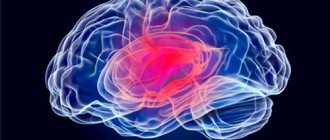Regarding the topic of symptoms and signs of schizophrenia, it is necessary to understand that the disease, “...during its onset and initial development, is clinically extremely polymorphic,” and it can be quite difficult to recognize it even for an experienced psychiatrist. That is why in psychiatry it is customary to identify typical forms with clear symptoms and signs of schizophrenia in each specific “cliché”.
In particular, you should know that at the initial stage of development of the disease, the symptoms of schizophrenia appear chaotically and cannot be attributed to a specific type. Moreover, the founder of the modern nosological concept in psychiatry and the classification of mental disorders, psychiatrist “...Emil Kraepelin, when initially identifying schizophrenia as a separate nosological unit, relied on cases that were far advanced, with obvious personality changes.”
It was on the basis of such pronounced signs of schizophrenia that the first classification was created, which included only three types of the disease:
- early dementia;
- hebephrenia;
- catatonia.
At the end of his career, the German psychiatrist expanded the classification, adding seven more types, which indicates “... the diversity and difficulty of systematizing the clinical manifestations of schizophrenia.”
Since the mid-20th century, there has been great interest in scientific research in psychiatry, which was carried out with the aim of identifying the symptoms of schizophrenia and the characteristics of its development, both for the purpose of studying the disease and for the effective application of this knowledge in the treatment of schizophrenia. For example, to predict the course in each specific case and the results of individually selected treatment.
Symptoms of a mental disorder
The World Health Organization divides the symptoms of mental disorders in humans into 4 main groups:
- Sensory-perceptual symptoms in which a person has a distortion of reality and can hear, feel or see things that others cannot sense.
- A common neurological symptom is cognitive impairment. The patient is increasingly experiencing a disorder of clear speech, memory lapses occur, and pathological beliefs about an event are established.
- Symptoms of a behavioral nature, when the patient may show unreasonable aggression towards relatives or stop performing daily functions.
- Emotional disorders most often occur as the main symptom; the patient may constantly feel a feeling of fear or sadness.
Negative symptoms of schizophrenia
This type of symptoms of this psychological deviation is characterized by the loss of any qualities. They usually begin to fade after the disease manifests itself. A person begins to notice that his physical strength is leaving him, he becomes indifferent to the world around him, lacking initiative. Negative symptoms of this mental disorder include:
Advertising:
- constant desire for loneliness and loss of will;
- frequent mood swings;
- apathy, constant thoughts;
- passive behavior and emotional poverty;
- impaired coordination and thinking;
- affective flattening;
- low initiative;
- lack of will, low motor activity;
- low level of self-control;
- disturbances in thinking and sequence of actions;
- inability and unwillingness to maintain dialogue;
- dissatisfaction with life, lack of desire for self-development.
If you begin to notice any changes in behavior in your loved one, talk to him and insist on visiting a psychologist.
Recognize schizophrenia in its early stages
possible according to a certain set of manifestations. If a woman remains in a depressed mood for a long time, refuses to communicate, tries to stay alone longer, or has become secretive, this is a good reason to consult your doctor for advice. She also begins to neglect basic hygiene rules, which she had not observed before, it is also worth visiting a doctor.
Signs of a mental disorder
Every second person with a mental disorder, starting from the early stages of the disease, experiences characteristic symptoms. They can appear with different intensities and frequency, but they are easy to notice with constant observation of a person. If one of the signs appears, you cannot leave it unnoticed and you should seek professional help.
Signs of a mental disorder most often go beyond certain cultural norms or beliefs in modern society. It is customary to identify the main signs of the course of the disease, which are most common among people with this diagnosis - memory impairment and sound thinking, sudden changes in a person’s behavior and mood for no known reason.
Groups of symptoms of schizophrenia
When defining schizophrenia, it is very important to distinguish between the signs and symptoms of this disease. For many diseases these parameters are identical, but for this mental disorder they will be different. Modern experts use the Blair tetrahedron to determine symptoms. There are stronger and weaker manifestations of schizophrenia. In general, to determine this lesion, the following signs must be assessed:
Advertising:
- Alogia
, or associative defect. This is the primary manifestation of schizophrenia, which consists of a lack of logical thinking. The woman becomes incapable of the thought process, which is why she starts asking a lot of questions. This manifestation is also characterized by a poor vocabulary and the use of short and incomplete sentences. - Autism
. This sign can be recognized by a change in a woman’s behavior; she becomes more withdrawn and moves away from the world around her. She also becomes indifferent to the lives of her loved ones and immerses herself in her own world. However, her interests become monotonous and limited. - Affective inadequacy
. It can be recognized using simulated situations. If a woman begins to behave inappropriately, there is a high risk that she actually has schizophrenia. Also, many reactions in patients are inappropriate: laughter at a funeral or tears during some holiday. In such cases, the expressed emotions do not coincide with internal experiences. - Ambivalence
. This symptom is characterized by the fact that a woman simultaneously experiences conflicting feelings towards the same object.
The signs listed above are positive. However, it must be borne in mind that they are not the norm. They received this designation due to the fact that a woman acquires such changes as schizophrenia develops. If you notice changes in behavior in your loved ones, consult a doctor immediately.
[media=
https://youtu.be/-I1wEVnVi78
]
Causes of mental disorders
Scientists have found that the reasons for changes in a person’s mental state can be external factors such as psychological or social. Biological factors include a genetic predisposition to constant depression or nervous breakdowns, especially if, while a person was growing up, there were complex relationships between parents that left a certain imprint on the child’s psyche.
The results of many years of research have shown that the causes of mental disorders most often come from the patient’s unfavorable childhood. Drugs and alcoholism, temporary restriction of a person’s freedom in a confined space, frequent depression, difficult life situations and incidents can also lead to the development of the disease.
Who's at risk
The age at which the first characteristic signs of schizophrenia appear in women is 23-25 years. Earlier manifestations are rare in psychiatric practice. In the case of childhood morbidity, girls experience rapidly progressing personal destruction, accompanied by severe dementia.
- The first group includes women with an unstable nervous system
. If mental tension persists for a long period of time, then in a state of severe stress the first hallucinogenic visions may appear. At the first stage of schizophrenia, women do not have any complaints about their condition, since pathological personality changes are still insignificant. But after a while, relatives begin to notice characteristic oddities, which is a prerequisite for contacting a specialized specialist. - The second group is women with a genetic predisposition to the disease
. This is a completely convincing theory of the development of the disease, which is based on the assertion that schizophrenia is transmitted through the female line. Practice shows that children of both sexes can inherit mental disorders from a sick mother, but girls are at greater risk. - The third group - women with pathological changes in the processes of exchange between brain neurotransmitters
. The transmission of nerve impulses caused by a deficiency/surplus of such mediators as dopamine, acetylcholine, and glutamic acid is disrupted. In this case, the trigger is severe stress, which provokes a complex of pathological reactions in brain tissue cells, which becomes the cause of schizophrenia. - The fourth group is young mothers who are faced with the sudden need to fulfill adult social roles
. Symptoms appear under the influence of a stressful situation, severe lack of sleep and emotional fatigue. However, in the context of such a development of the disease, it is important to take into account the genetic predisposition to mental disorders.
Types of mental disorders
Currently, the most common diseases include some types of human mental disorders. These data can always be tracked in the reports of the World Health Organization, where schizophrenia is among the top five most common diseases among the entire world population. It can originate during early human development, but in the transition period its signs will begin to increase.
In second place in popularity are types of disorders associated with the abolition of dependence on psychotropic or narcotic substances, including alcohol. Depression, as a type of mental disorder, occurs in every fifth inhabitant of the planet and is accompanied by pessimistic views of life and an apathetic mood.
Psychological mental disorders
According to the International Classification of Diseases, psychological mental disorders belong to groups F10 – F19 and are associated with human behavior disorder due to excessive use of psychoactive substances.
Most often, this type of disorder occurs against the background of addiction to a certain type of psychotropic drug. A person is convinced on a subconscious level that it is psychotropic substances that give him a dose of pleasure and without them he cannot exist normally. Over time, addiction occurs, which cannot be eliminated without professional help and treatment.
Organic mental disorder
Organic and symptomatic disorders manifest themselves in patients at the cerebral level; they can manifest themselves against the background of brain injuries, after a severe stroke, or against the background of abuse of alcohol, narcotic and psychotropic substances.
Organic mental disorder can be diagnosed based on two main characteristics. The first include cognitive dysfunction, when a person has problems with memory or habitual learning. Impairments may be associated with loss of alertness, concentration and awareness. The second group includes vivid manifestations of hallucinations, anxiety and depression, as well as disturbances in emotional behavior.
Signs of mental disorder in women. What is psychosis, signs of its manifestation and how to treat
If a person suddenly begins to behave completely inappropriately, they usually say about him that he has “gone crazy.” This colloquial expression usually hides a very specific medical diagnosis - psychosis or “a pronounced disorder of mental activity, in which mental reactions grossly contradict the real situation.”
This definition of psychosis belongs to the famous Russian scientist Ivan Petrovich Pavlov, the creator of the science of higher nervous activity, better known to all of us from his famous experiments with reflexes in dogs. The great scientist practiced at the beginning of the 20th century, since then medicine and science have stepped forward, but his conclusions about the essence of psychosis and descriptions of this condition remain relevant today.
Causes of psychosis
Modern doctors believe that not a single person in the world is immune from the development of psychosis. Symptoms of psychotic disorders in adults and children can occur as a result of a variety of diseases and conditions, injuries, and brain disorders. The most common provoking factors include:
- Unfavorable heredity. Scientists have identified at least one gene (ZNF804A) associated with psychosis, and have long proven that this condition may well be transmitted from parents to children
- Brain injuries. The more serious the brain damage, the higher the risk of developing psychosis, and it may not appear immediately, but after a long time.
- Alcohol or drug intoxication. Chemical poisoning of the brain that occurs when taking alcohol or drugs ultimately leads to the destruction of its individual structures and can provoke the development of many mental disorders, including psychosis.
- Taking certain medications.
- Diseases of the nervous system, such as epilepsy, stroke and so on.
- Infectious diseases accompanied by disorders of brain activity.
- Brain tumors.
- Hormonal changes due to diseases or certain conditions - puberty, pregnancy, childbirth, and so on.
- Deficiency of certain vitamins and electrolyte metabolism disorders (lack or excess of minerals) in the body.
- Severe immune disorders.
- Serious stress, traumatic events.
Acute mental disorders
Transient and acute psychotic personality disorders are characterized by the most rapid development of diseases. The condition of a sick person can deteriorate significantly in just a few days, with several main signs observed - depression and passive mood, accompanied by intense hallucinations, states of seizures and delirium.
Acute mental disorders are conventionally divided into two categories - polymorphic state and schizophrenia. The latter occurs most often, the true causes of which have not yet been established. The risk group may include people who have been subjected to severe violence (not necessarily of an intimate nature), as well as those who have experienced severe emotional stress.
Clinical manifestations
The main features are affective states, manifested in the following phases:
- depressed;
- manic;
- mixed.
Symptoms of the disease arise either spontaneously, or (which happens more often) under the influence of some external causes. The seasonal nature of exacerbations is also typical.
According to the type of course, female psychoses can be:
- periodic with a clear change of exacerbation and remission;
- double, triple, etc., when within one cycle of a psychotic disorder, attacks and remissions replace each other 2–4 times in a row;
- continuous, in which the patient’s condition practically does not improve;
- single-attack: after a single episode of exacerbation, a long-term remission occurs, while there may not be a second attack (this form of the disease is diagnosed quite rarely and usually by chance when taking an anamnesis);
- protracted: the acute period lasts a long time - for 1-2 years (a similar clinical picture is typical for depression).
Chronic mental disorder
In medicine, chronic disorders are usually understood as a condition of a sick person when it occurs over a long period of time and with characteristic attacks. Types of such disorders include paranoia, epilepsy, manic or depressive psychosis.
Chronic mental disorder, like most diseases of this type, is characterized by periods of improvement and sharp deterioration in a person’s condition. Even after all signs of the disease have been suppressed, the patient is left with a persistent mental defect that is difficult to treat.
Can schizophrenia go away on its own?
Schizophrenia is a mental disorder of a polymorphic type, accompanied by increased emotional reaction, deterioration of thinking function and other symptoms. Usually the disease is inherited. But it can arise due to somatic diseases and the influence of social factors. It is often formed due to the negative effects of alcohol or drugs.
Tissue destruction occurs in the brain, so the patient develops the first signs, which develop more and more over time. Schizophrenia cannot go away on its own; it is not completely curable. Even if it is provoked by somatic factors, after they are eliminated, tissue damage will remain in the brain that can no longer be restored. Therefore, psychiatrists prescribe medications that can control the condition during an exacerbation.
In the acute stage, schizophrenia is kept under control with medications. But the patient periodically experiences a period of remission. This means that signs of a mental disorder do not appear and the person feels normal. At this moment, he may think that the pathology is over, but in the near future repeated attacks and exacerbation of the pathology may occur.
Temporary mental disorder
Unlike a chronic disorder, a temporary one involves understanding such conditions of a sick person in which short-term mental abnormalities are observed, ultimately amenable to complete recovery.
A temporary mental disorder can manifest itself in a person in the form of delirium tremens. This pathological condition is most often caused by prolonged alcohol consumption. Temporary disorders also include severe mental states, experiences and nervous conditions caused by external environmental factors.
What are mental illnesses?
Mental illnesses are those that lead to mild or severe changes in thinking and behavior, disconnect a person from reality, and prevent them from adequately interacting with others, performing work, and everyday activities.
Mental disorders are very diverse - there are more than 200 types. The most common are depression, dementia (dementia), bipolar disorders, anxiety disorders, and schizophrenia.
The causes of mental illness are also different: genetic predisposition, biochemical changes (improper functioning of certain substances) in the nervous system, illness and injury, severe emotional shock, chronic stress. Often several different factors work in combination, some making a person predisposed, and others acting as a trigger.
Treatment of mental disorders
To treat a mental disorder or reduce a person’s suffering during an exacerbation of the disease in modern medicine, there are effective methods that can be practically successfully used only with professional supervision or while in an inpatient hospital.
Treatment of mental disorders should only take place in combination with the use of psychotropic medications and professional psychotherapy. For patients, the use of pills alone is not enough; it is important to regularly conduct conversations or exercises to get rid of the symptoms and causes of a serious mental illness.
Active treatment
Carried out using:
- tranquilizers and antipsychotics with individual determination of the daily dose (some patients refuse therapy due to severe side effects of such drugs: drowsiness, decreased performance, deterioration of cognitive functions, etc.);
- antidepressants intended for intravenous administration (used in a hospital setting).
Indications for hospitalization are obsessive thoughts of suicide, delusions, hallucinosis, severe disturbances of consciousness (typical of schizoaffective disorder), and pregnancy.
Treatment of mental disorders in men
Among men, acute and organic types of mental disorders are most common, which require a more serious and long-term approach to treatment. Psychosis, schizophrenia, addiction to illegal drugs and manic episodes – these diseases affect more than 40% of the male population. According to WHO statistics, men are much less likely to admit that they have mental disorders than women.
Treatment of mental disorders in men occurs under constant supervision by a professional psychotherapist. The most effective treatment is achieved only if it is comprehensive, that is, a combination of medications with techniques and exercises that are based on a direct conversation between the patient and the doctor.
SIGNS OF MENTAL DISORDERS (WHEN TO CONSULT A DOCTOR)
The signs of mental disorders, as well as the frequency of their occurrence, have been a common issue of concern to the population in recent years. This is especially true due to the fact that the pace of life is steadily growing, while the resources of the human nervous system remain at the same level. Very often, mental disorders develop gradually, step by step, introducing features into the human psyche that were previously not characteristic of him; accordingly, there is a good chance of noticing them in time and providing proper medical care.
According to the latest data, mental disorders are detected in 25-30% of the population, that is, in every fourth person in the world. However, it is noteworthy that 75-80% suffer from non-psychotic, mild mental disorders. Serious mental illnesses such as schizophrenia occur in 6-17% of cases. Alcoholism - 60%.
It must be remembered that a mental disorder is not a death sentence, since with sufficient and timely treatment from a specialist, as well as a responsible attitude and attentiveness to one’s condition, the symptoms of mental disorders can be stopped (and often the disorder itself can be completely cured), which will help maintain the same social, professional status and level of quality of life.
SIGNS
Asthenic syndrome.
This condition can accompany any mental disorder and many somatic diseases. Asthenia is expressed in weakness, low performance, mood swings, and increased sensitivity. A person begins to cry easily, becomes instantly irritated and loses self-control. Asthenia is often accompanied by sleep disturbances, a feeling of weakness, increased fatigue, and an inability to cope with the previously habitual workload or study.
Obsessive states.
The wide range of obsessions includes many manifestations: from constant doubts, unpleasant thoughts “stuck, spinning in the head,” fears that a person is not able to cope with, to an irresistible desire for cleanliness or performing certain, unusual actions. Under the power of an obsessive state, a person may return home several times to check whether he has turned off the iron, gas, water, or whether he has locked the door. An obsessive fear of an accident may force the patient to perform certain rituals, which, according to the sufferer, can ward off trouble. If you notice that your friend or relative washes their hands for hours, has become overly squeamish and is always afraid of getting infected with something, this is also an obsession. The desire to avoid stepping on cracks in asphalt, tile joints, avoiding certain types of transport or people wearing clothes of a certain color or type is also an obsessive state.
Mood changes.
It is especially important to pay attention not so much to short-term changes under the influence of momentary factors, but rather to changes in mood that were previously not characteristic of a person, long-term, from 2 weeks or more.
- Melancholy, depression, desire for self-recrimination, talk about one’s own worthlessness, sinfulness, death, lack of future, hope for the best, etc.
- Unnatural frivolity, carelessness.
- Foolishness, not typical of age and character.
- A euphoric state, optimism that has no basis.
- Apathy, a painful feeling of lack of emotions.
- Fussiness, talkativeness, inability to concentrate, chaotic thinking.
- Irritability, anger, aggressiveness
- Inability to contain emotions, tearfulness, slight breakdowns in shouting in conversation
- Increased sexuality, extinction of natural shyness, inability to restrain sexual desires or, conversely, loss of libido, lack of morning erection in men
Unusual sensations in the body.
Tingling, burning sensations in the skin, burning sensations, “twisting” pressure in the body, moving “something inside”, “rustling in the head”, the presence of foreign objects in the body - can signal disorders in the nervous system.
Hypochondria.
It is expressed in an obsessive, obsessive search for serious diseases and disorders, a painful “listening” to the slightest changes in the state of one’s body. At the same time, the patient often does not trust doctors, demands repeated and more in-depth studies, is completely concentrated on searching for serious illnesses, and demands to be treated as a patient.
Appetite disorders.
It is important to pay attention to both a sudden increase in appetite—“ravenous appetite”—and its sharp decrease and distortion of taste preferences. The reason may be either a disease of the gastrointestinal tract, or a general depression of the state, or a morbid conviction of excessive fatness in the absence of it. It is also important if previously tasty food has lost its taste, has become bland, tasteless, “like cardboard.”
Illusions
There is no need to confuse illusions and hallucinations. Illusions force a person to perceive real objects and phenomena in a distorted form, while with hallucinations a person perceives something that does not really exist.
Examples of illusions:
- the pattern on the wallpaper seems to be a tangle of snakes or worms;
- the size of objects is perceived in a distorted form;
- the patter of raindrops on the windowsill seems like the careful steps of someone scary;
- the shadows of the trees turn into terrible creatures creeping up with frightening intentions, etc.
Hallucinations
If outsiders may not be aware of the presence of illusions, then the susceptibility to hallucinations may manifest itself more noticeably. Hallucinations can affect all senses, that is, be visual and auditory, tactile and gustatory, olfactory and general, and also be combined in any combination. To the patient, everything he sees, hears and feels seems completely real. He may not believe that those around him do not feel, hear, or see all this. He may perceive their bewilderment as a conspiracy, deception, mockery, and become annoyed that he is not understood.
- With auditory hallucinations, a person hears various kinds of noise, fragments of words or coherent phrases. “Voices” can give commands or comment on the patient’s every action, laugh at him or discuss his thoughts.
- Gustatory and olfactory hallucinations often cause the sensation of an unpleasant property: a disgusting taste or smell.
- With tactile hallucinations, the patient thinks that someone is biting, touching, strangling him, that insects are crawling on him, that some creatures are inserting themselves into his body and moving there or eating the body from the inside.
- Externally, susceptibility to hallucinations is expressed in conversations with an invisible interlocutor, sudden laughter or constant intense listening to something. The patient may constantly shake something off himself, scream, look around himself with a worried look, or ask others if they see something on his body or in the surrounding space.
Changes in thinking
Previously, the overestimation of one’s own capabilities or abilities, the conviction of one’s own exclusivity, a passion for esotericism, magic, and a sudden belief in the supernatural were not typical. The pace of thoughts in your head can also change, either becoming uncomfortably slow or so fast that it is sometimes very difficult to concentrate on one thought.
Crazy thoughts.
Delusional states often accompany psychosis. Delusion is based on erroneous judgments, and the patient stubbornly maintains his false belief, even if there are obvious contradictions with reality. Delusional ideas acquire significance that determines all behavior. Delusional disorders can be expressed in erotic form, or in conviction of one's great mission, in descent from a noble family or aliens. The patient may feel that someone is trying to kill or poison him, rob or kidnap him. Sometimes the development of a delusional state is preceded by a feeling of unreality of the surrounding world or one’s own personality.
Desocialization.
There are people who are unsociable and unsociable due to their character. This is normal and should not raise suspicions of mental disorders. But if a born cheerful person, the life of the party, a family man and a good friend suddenly begins to destroy social ties, becomes unsociable, shows coldness towards those who were recently dear to him - this is a reason to worry about his mental health. A person becomes sloppy, stops taking care of himself, may quit his job without a good reason, abandon his career, previous goals and interests, and in society may begin to behave shockingly - commit acts that are considered indecent and unacceptable.
Hoarding or excessive generosity
Yes, any collector can be under suspicion. Especially in cases where collecting becomes an obsession and subjugates a person’s entire life. This can be expressed in the desire to drag things found in garbage dumps into the house, hoard food without paying attention to expiration dates, or pick up stray animals in quantities that exceed the ability to provide them with normal care and proper maintenance.
The desire to give away all your property and excessive spending can also be regarded as a suspicious symptom. Especially in the case when a person has not previously been distinguished by generosity or altruism. Particular attention should be paid to this condition, especially when a person suddenly begins to actively visit banks and apply for loans.
Treatment of mental disorders in women
Most often, women experience mental disorders associated with depression or constant anxiety. These species are the most resistant to drug treatment. Any treatment is based only on an individual approach, based on the woman’s condition, her age and previous injuries to the disease.
Treatment of mental disorders in women is based on a specific scheme, which includes the use of antidepressants, a combination of other pharmacological agents and mandatory psychotherapeutic techniques.
Signs of low-grade schizophrenia in women
Unusual behavior is one of the clearest symptoms of the disorder:
- in severe cases, delusions develop (obsession with persecutors, poisoners, sometimes a person discovers “superpowers” or an incurable disease, lack of internal organs) and hallucinations (perception of non-existent “voices”, smells, “visions”);
- a frequent symptom is a tendency to philosophize, strange cause-and-effect relationships, unusual, inverted logic; in random events a woman can see “symbols”, “signs”, “messages”;
- a characteristic symptom of schizophrenia is loss of self-control: the woman says that she no longer controls her thoughts, speech, emotions, body movements; her thoughts and body are “under the influence” of another person (relative, ill-wisher, alien, otherworldly force);
- irritability, asociality and unfriendliness (direct aggression in acute form);
- The opposite symptomatology also occurs - the woman becomes withdrawn, unemotional and loses interest in everything; work and hobbies are no longer pleasing, a woman no longer cares where to go, how to dress, what to eat - a person may not leave the house for days and literally not get up from the couch.
Types and forms of schizophrenia in women - episodic, paroxysmal, continuous. Schizophrenia can be mixed with symptoms of a mood disorder - depression or mania (schizoaffective disorder) - or occur in an erased, hidden form (schizotypal disorder). The type of schizophrenia and the severity of the disease will be accurately determined by a diagnosis from an experienced specialist.
Mental disorders in adolescents
One in six people affected by a mental disorder are in the 10-19 age group, one of the most difficult transition periods of adulthood. The main reason for the mental disorder of a teenager is the process of personality formation, which can be negatively influenced by the people around him, as well as a manic desire to try prohibitive drugs for the first time in his life.
Mental disorders in adolescents can only be treated in a comprehensive manner by professionals together with parents. During this period, it is important to create a safe atmosphere for the life of a teenager, to protect him from possible risks and negative factors from others.
Condition after childbirth
Certain changes occur in a young body after childbirth. Therefore, girls of this age who have given birth may be subject to varying degrees of development of schizophrenia if they have a predisposition to it. After giving birth, women may develop schizophrenia due to severe stress that affects their physical and psychological state. But this is an extremely rare occurrence. The following factors can lead to the development of schizophrenia after childbirth:
- loneliness;
- depressed state;
- postpartum depression;
- hereditary predisposition to the disease;
- lack of communication with other people.
A mental disorder in a woman who has given birth to a child is difficult to ignore. It is characterized by pronounced symptoms, which are not typical for a healthy person. The woman refuses to accept her child and fulfill new responsibilities. During this period, pathological delirium is often observed in patients.
After the symptoms of schizophrenia subside, women are left with a feeling of alienation towards their own baby. To cope with unpleasant symptoms and disease, a woman will need to undergo a course of drug therapy. Close people should help her in every possible way to achieve recovery. If they begin to pull away, the patient’s condition will worsen significantly.
Mental disorders in children
Mental disorders in children under 10 years of age may be indicated by symptoms such as impaired attention and hyperreactivity, which manifests itself in the form of extreme mobility or fussiness. Starting from the very birth of a child, it is very important not to miss the moment of the onset of pathological deviations in his behavior.
The doctor is faced with the task of promptly and correctly dividing mental disorders due to improper pedagogical upbringing of parents or genetic predisposition. The initial signs of the disease in children include decreased appetite, which occurs repeatedly in the form of vomiting or complete refusal to eat.
Mental disorders symptoms. A symptom of mental illness is impaired thinking
The second group of signs of mental illness are symptoms of thinking disorders.
The patient's pace of thinking may change. It can speed up so much that the patient does not have time to express his thoughts and experiences in words. When speaking, he misses words and entire phrases. A similar condition is observed more often in a state of mania during manic-depressive psychosis. The state of slow thinking is characterized by inhibition of patients; they answer in monosyllables, with long pauses between words. These symptoms of mental illness are characteristic of depression, dementia, and stupor.
Sometimes they talk about the viscosity of thinking. In this condition the patient is very detailed. If he is asked to talk about something, he gets stuck for a long time on minor details and has difficulty getting to the most important part of the story. It is extremely difficult to listen to such people. The viscosity of thinking reflects its rigidity; occurs in organic brain lesions, epilepsy.
Thinking disorders also include so-called reasoning - a tendency to empty ranting and philosophizing.
The fragmentation of thinking is manifested in the fact that individual phrases are not connected with each other; The phrases of such patients are completely impossible to understand.
Reasoning and fragmented thinking are more common in schizophrenia.
Symptoms of neuropsychiatric diseases such as disorders of the content of thinking can be divided into obsessive, overvalued and delusional ideas.
Obsessive states include conditions that occur in patients against their will; patients evaluate them critically and try to resist them.
For example, obsessive doubts are constant uncertainty about the correctness of actions and actions. This haunting unknown exists in defiance of reason and logic. Patients check 10 times whether the appliances are turned off, whether the doors are closed, etc.
Intrusive memories are intrusive memories of an unnecessary, often unpleasant fact or event.
Obsessive abstract thoughts - constantly scrolling through various abstract concepts in the head, operating with numbers.
The content of obsessive contrasting thoughts contradicts the patient’s worldview; they are blasphemous or blasphemous.
There is a large group of symptoms of neuropsychic disorders such as obsessive fears and phobias. These are fears of getting sick: alienophobia (fear of going crazy), cancerophobia (fear of cancer), cardiophobia (fear of heart disease), vertigophobia (fear of fainting), mysophobia (fear of pollution, which can lead to an infectious disease); fears of space: agoraphobia (fear of open space), claustrophobia (closed space), acrophobia (fear of heights); social phobias: lalophobia (fear of speaking, speaking in front of listeners, fear of incorrect pronunciation of words, stuttering), mythophobia (fear of telling a lie), eretophobia (fear of blushing), gynecophobia (fear of communicating with women) and androphobia (with men). There are also zoophobia (fear of animals), triskaidekaphobia (fear of the number “13”), phobophobia (fear of fear) and many others.
Obsessive ideas can be observed in obsessive-compulsive disorder and schizophrenia.
With overvalued ideas, logically based beliefs arise that are based on real events, associated with personality traits, and extremely emotionally charged. They encourage a person to engage in narrowly focused activities, which often leads to maladjustment. Criticism remains for highly valuable ideas, and there is the possibility of their correction.










